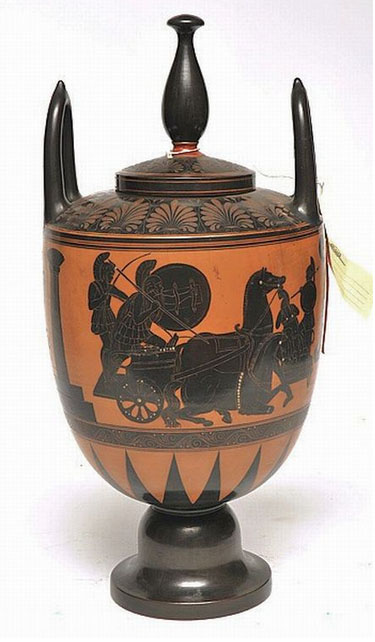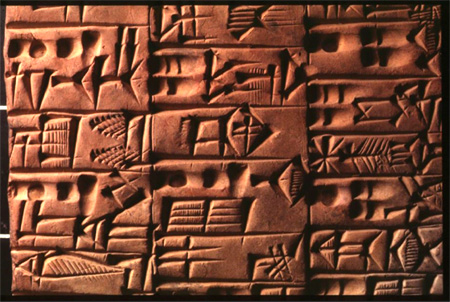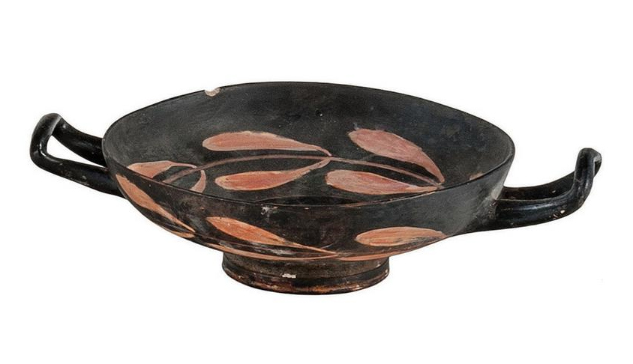Learn about antiques and collectables...
Click on a category below to show all the entries for that category.
Learn about and understand the items, manufacturers, designers and periods as well as the specialist terms used in describing antiques and collectables. Either click one of the letters below to list the items beginning with that letter, or click on a category on the left side of the screen to list the items under that category.
Amphora
An ancient form of storage jar and one of the principal vessel shapes in Greek pottery, an amphora is a two-handled pot with a neck narrower than the body. In ancient times they were used as storage and transport vessels for olives, cereal, oil, and wine. The shape has continued to be used in ceramics to the present time.
Canopic Jars
Canopic jars or boxes were used by the Ancient Egyptians during the mummification process to store and preserve the internal organs of their owner for the afterlife. They were commonly either carved from a stone such as alabaster, or were made of wood or pottery.
Chinese Ding Porcelain
Ding ware is a type of Chinese porcelain that was produced in the northern city of Ding in the Hebei province during the Song Dynasty (960-1279). It is considered to be one of the "Five Great Kilns" of Chinese ceramics, along with Jian, Jun, Guan, and Ru wares.
Ding ware is known for its fine white porcelain body, which was made from kaolin clay, and its elegant shapes and designs. The glaze on Ding ware is usually transparent and has a bluish-white or grayish-white color. It was often decorated with underglaze blue or iron-brown designs.
Ding ware was highly prized during the Song Dynasty, and it was exported throughout Asia and as far as the Middle East and the Mediterranean. It was also an inspiration for other porcelain-making centers in China and Japan. The production of Ding ware declined after the Song Dynasty, and it is now considered to be a rare and valuable collectible.
Cuneiform
An ancient system of writing in use from the 34th century BC to about the 2nd century AD by Middle Eastern people, using wedge or arrow shaped characters. Cunieform documents were written on clay tablets using a blunt reed as a stylus.
Egyptian Faience
Egyptian faience is the oldest known type of glazed ceramic, first developed more than 5,000 years ago in Egypt and elsewhere in the ancient world, using the process of efflorescence. This process involves mixing the glaze materials in with the rest of the ingredients. Metals in the paste colour the glaze, for example copper for a turquoise colour and cobalt for a blue glaze. As the moulded object dries, the glaze materials move to the surface of the object. When the object is fired in a kiln, the glaze materials undergo a chemical change which brings out the colours.
Garnitures
A garniture usually consists of a set of matching but not identical ornaments, usually elaborately made of bronze, gilt bronze, spelter or brass. The ornaments are commonly covered or uncovered urns, candelabra, vases, tazze or statuary, that are more decorative than practical. If only two ornaments are present, the set may have originally been part of a clock garniture, from which the clock has been separated.
Kylix
A kylix is an ancient Greek pottery vessel, with a wide shallow cup usually with tow handles, on a stem with a foot. The interior of the cup, called the tondo provided an almost flat surface for painted decoration.
Song Dynasty
The Song Dynasty was a ruling dynasty in China from 960 to 1279 AD. It was divided into two periods, the Northern Song (960–1127) and the Southern Song (1127–1279). The emperor was the ultimate authority, but he relied on officials who were selected based on their merit and skills rather than their family background or social status. The Song Dynasty was a period of great artistic and cultural achievements, particularly in the areas of poetry, painting, and calligraphy. The Chinese invented the printing press during this period, which revolutionized the spread of knowledge and ideas. During the Song Dynasty, China had a prosperous economy and was a centre of international trade, particularly in luxury goods such as silk, tea, and porcelain. The use of paper money became more widespread during this period, facilitating commerce and trade.


